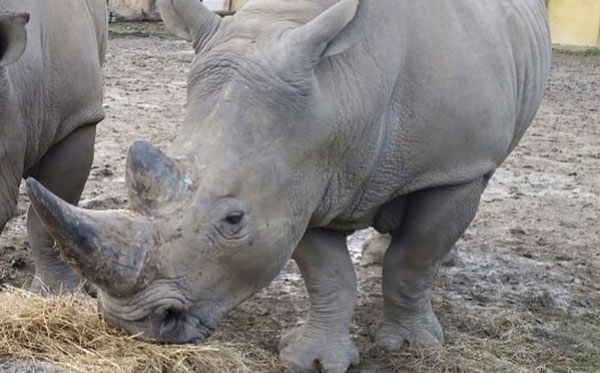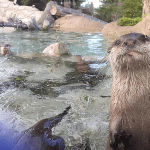Happy 6th Birthday Balu!

Birthdays are always special and we celebrated the sixth birthday of one of our largest African animals – Balu, a Southern White Rhino.
Our White Rhino males, Balu and Zimba, are both currently ‘teenagers’ and this is an important part of their development as they grow and gain social skills until they became mature adults around the age of 10. They can then move on to another collection and become part of a breeding group. Balu came from Knowsley Safari Park in 2012 and is very settled with Zimba even though they can occasionally be seen asserting their dominance, then moments later sleep quietly next to one another!
As one of the largest and heaviest land animals in the world, the Southern White Rhino has an immense body and large head. Coupled with a short neck and broad chest he is a real powerhouse in the animal world and whilst he may have poor eye sight his hearing is excellent. You will often see a rhino swivel their ears around to pick up sounds but it is still their sense of smell that is strongest! If you were stood a hundred metres from our Rhinos and kept very still our Rhino wouldn’t see you but he’d certainly be able to smell you! Another amazing fact is how they take ‘mud baths’ to keep the flies from their sensitive skin. And did you know that when conditions are dry they can go without water for four or five days.
Rhinos are also easily recognised for their distinctive horn which is made from a hair-like substance called Keratin. Most amazingly, they are able to grow a new horn should it be broken or damaged – with some growing as long as 1.5m.
The name ‘White Rhino’ is actually a misuse of the native African word ‘widje’, which means wide (mouth) and it has nothing to do with colour at all. They are actually grey in colour and come from North-Eastern and Southern Africa. In the wild they live in small groups in and around open woodland and nearby grassland. They are herbivores and grazers and use their wide, flexible front lip to enable it to gather more food in less time. We feed our White Rhinos hay, specialised pellets, alfalfa and grass which emulates the nutrients required which they would find in the wild.
The Southern White Rhino is listed as ‘Near Threatened’ with habitat loss, poaching and the highly illegal demand for Rhino horn for commercial and traditional Chinese medicine purposes.
Conservation projects continue across the globe to preserve the species for future generations.


